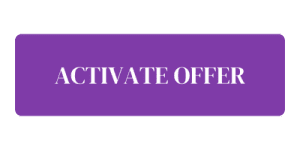Retailer and distributor mistakes can certainly set you back, but if learning can be done – it’s often the way that we grow the most as humans and business owners. As you go explore the path of being a profitable wholesaler, knowledge is power. Mistakes are bound to happen. But, remember, as a business owner and liver of life, what’s most important is how you react to things. Researching mistakes to avoid is a proactive approach that we fully approach, but should you encounter mistakes of your own or mistakes caused by others, embrace them.
When working with retailers and distributors there’s a lot at stake. Issues with retailers and distributors can arise in many ways, including payment delays, product quality issues, lack of communication, and more. Issues with inventory can also be at the forefront of these pitfalls, including lack of adequate inventory levels, delayed delivery of products and cash flow strains that come from having to regularly purchase more inventory. With the bottom line at risk, transact with your eyes open. Below, we will explore 10 tips to help avoid disaster with retailers and distributors. Our team at Kickfurther wants to see you succeed, so much so we’ve created an inventory funding platform that helps business owners get inventory funding up to 30% cheaper than other options. Before your mind gets too enticed though, here are 10 tips to avoid disaster with retailers and distributors.
10 Tips to Avoid Disaster with Retailers and Distributors
Relationships are key in business and in life. While they may be difficult to navigate at times, it’s always worth the extra effort to connect with others – especially when you rely on them for your success. Relationships with retailers and distributors can be challenging to navigate, and mistakes can lead to costly consequences. To avoid disaster, take our 10 tips below into account.
#1. Conduct thorough research
Before entering into any agreement with retailers and distributors, it is important to do your homework. Research the company’s reputation, financial stability, and track record to ensure that they are a good fit for your business. You know what they say about who you “hang out” with – it can be viewed as a direct reflection of you.
#2. Set clear expectations
Make sure that you clearly communicate your expectations to retailers and distributors. This includes everything from product quality to delivery schedules to pricing. This will help to avoid misunderstandings, establish trust, improve communication, and achieve better results. If they don’t know your expectations, they will not know how to meet your needs. For example, if you expect an order to arrive within 24 hours of promised delivery, communicate that. If you want a discount for a standing bulk order, communicate that. Never assume the retailer or distributor knows what you expect – even if it’s simple.
#3. Protect your brand
Your brand is your most valuable asset and protecting your brand with retailers and distributors is critical for maintaining brand identity, avoiding counterfeits, controlling pricing, building trust, and maintaining quality standards. It can help you build a strong and sustainable business over the long term. Make sure that you have systems in place to monitor and protect your brand from unauthorized use or misrepresentation.
#4. Build strong relationships
Developing strong relationships with retailers and distributors is key to long-term success. This includes regular communication, providing excellent customer service, and being responsive to their needs. Building trust may take time, so ensure that you fulfill your commitments on time and keep your promises. While you may be transacting business deals, keep in mind you are dealing with real people. Show them you care and get to know them on a more personal level while maintaining professionalism.
#5. Develop clear contracts and agreements
All agreements with retailers and distributors should be in writing and clearly outline the terms and conditions of the relationship. This can help prevent misunderstandings, conflicts, and disputes down the road. Contracts and agreements can also provide legal protection for both parties in case of a dispute. They can help define each party’s rights and obligations, and provide a framework for resolving conflicts.
#6. Monitor performance
Regularly monitor the performance of your retailers and distributors to ensure that they are meeting your expectations. This includes tracking sales, inventory levels, and customer feedback. By monitoring performance it can help you identify issues, improve communication, optimize inventory, increase sales, build relationships, and measure success. Stay close to operations.
#7. Address issues promptly
If any issues arise, it is important to address them promptly. This includes everything from product quality issues to missed delivery schedules. Addressing these issues promptly can help you maintain relationships, avoid escalation, improve communication, mitigate risk, resolve problems, and maintain customer satisfaction. It can be easy to overlook things that are not up to par – as you know they’re cause for headache but trust us this is a costly mistake. As a business owner, always be proactive.
#8. Communicate regularly
Regular communication is key to maintaining strong relationships with retailers and distributors. This includes providing updates on new products or promotions and addressing any concerns or issues that may arise. Communication on a regular basis can help build relationships, improve collaboration, identify issues, provide feedback, share information, and build trust. Communication can take you so far in the business world.
#9. Be adaptable
The retail landscape is constantly changing. Be willing to adapt to new trends, technologies, and consumer preferences to stay ahead of the curve. This can help you respond to changing market conditions, evolving customer needs, different markets, challenges, building relationships, and encouraging innovation.
#10. Plan for contingencies
No matter how well you plan, unexpected events can occur. Be prepared to pivot quickly and have contingency plans in place to minimize any negative impact on your business. Contingency planning involves preparing for potential challenges or disruptions to your business operations and developing strategies to mitigate the impact of these events. By developing a contingency plan and communicating it effectively with your partners, you can be better prepared to deal with unexpected events and maintain strong business relationships.
Closing thoughts
You’ve worked so hard to establish a reputable business. If disasters happen, own them. Learn from them. Keep going. Whenever possible though, be proactive and do business the right way. Take focus off the immediate profit of every action and find the greater value behind the things you do. As you work with retailers and distributors, keep these tips in mind and always think before speaking and acting. You don’t have to make decisions on the spot or respond to things right away. Invest the time you need to think things through clearly and say what needs to be said. This can help you avoid all kinds of mistakes. As your savvy business skills begin to pay off and your business grows you may need to access inventory financing. Increasing your purchasing power can help you lock in discounts and gain priority with retailers and distributors.
How Kickfurther can help
Maintaining adequate inventory levels can ensure timely deliveries of products and avoid stockouts, helping to develop healthy relationships with retailers and distributors. Preserve your cash flow for business operations and take advantage of affordable inventory funding.
Our platform offers funding that can cover up to 100% of your inventory on consignment, so you don’t pay us until your products sell. Invest more time building relationships and growing your business. We can help you free up working capital without giving up equity or taking on debt.
Interested in getting funded at Kickfurther? Here are 3 easy steps to get started:
#1. Create a free business account
#2. Complete the online application
#3. Review a potential deal with one of our account reps & get funded in minutes







